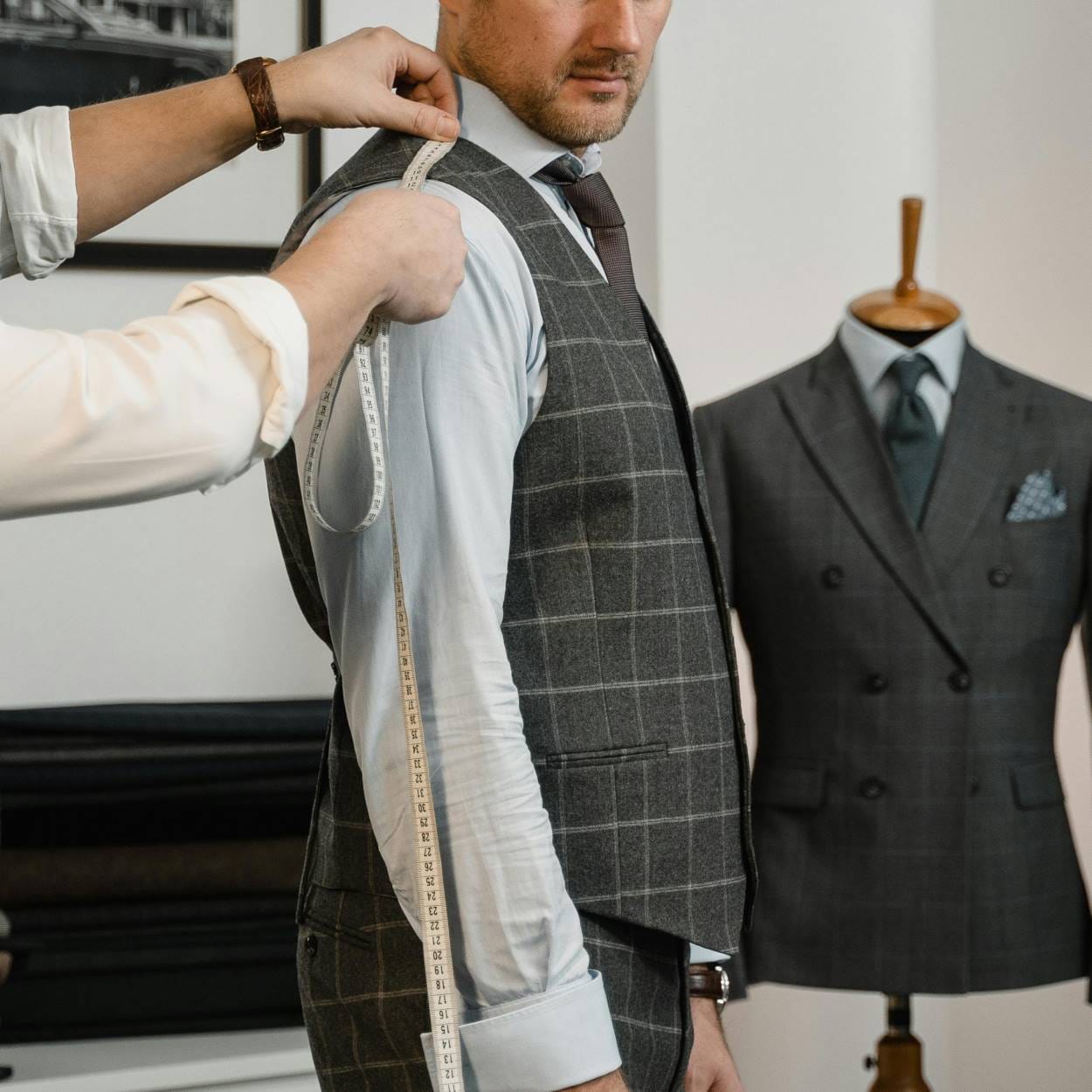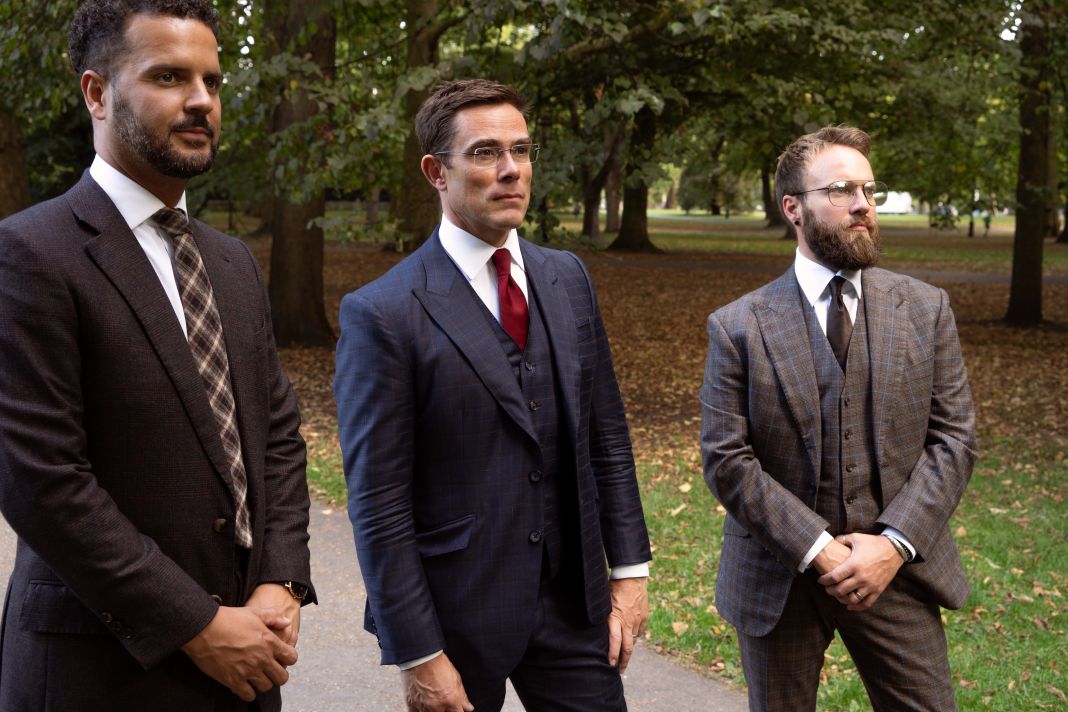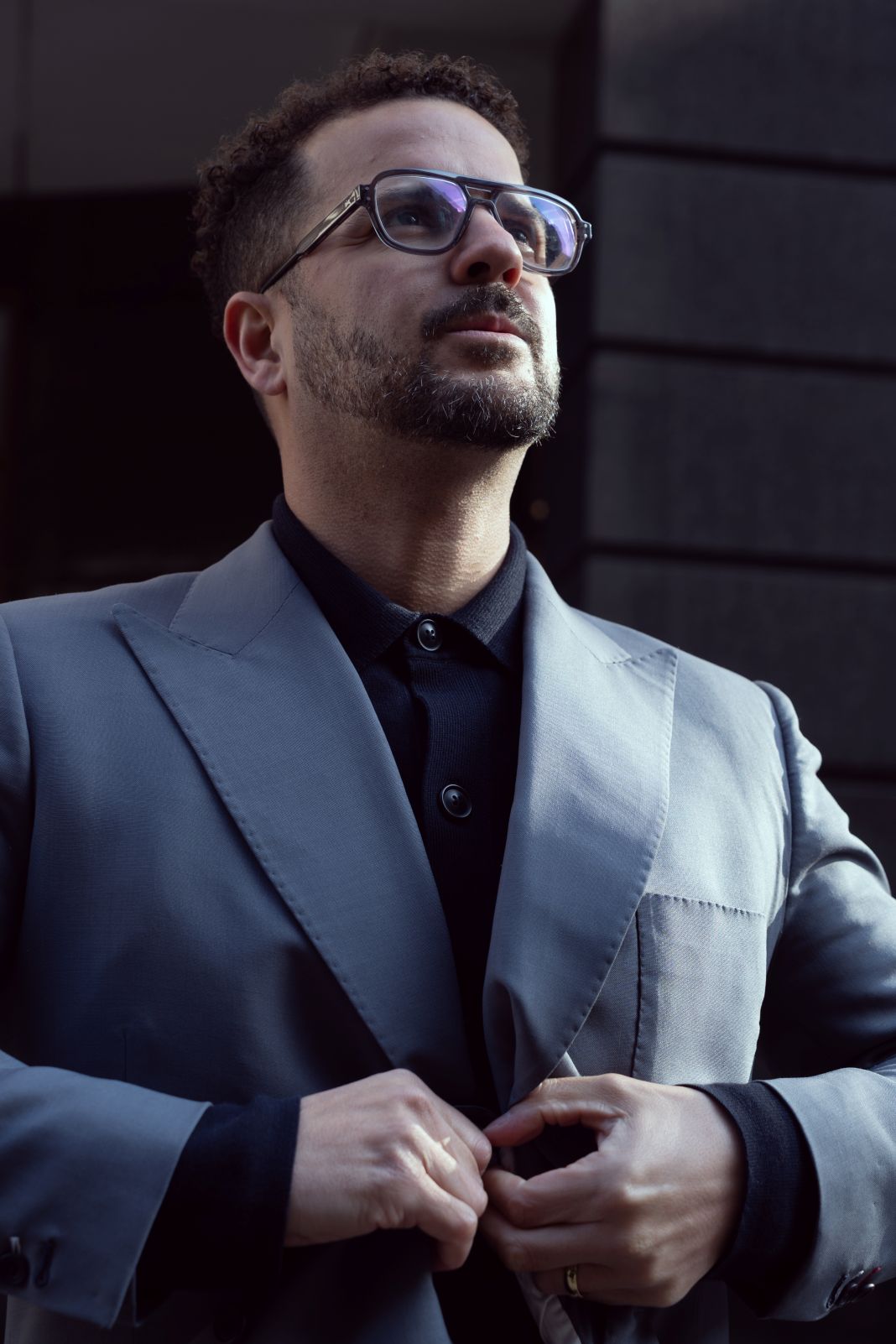How do you choose the best tailored jacket for your body shape this winter?
A well-fitted jacket can change how you feel and look during the colder months. The process begins with knowing your body shape. Each part of a jacket affects comfort, appearance, and movement, including shoulders, button stance, and fabric. In this guide, you will learn how to select a Fielding & Nicholson jacket that enhances your shape without drawing attention to the wrong areas.

Identify Your Body Shape: The Key to a Flattering Fit
The first step in getting a good fit is knowing your shape. The goal is to work with your natural proportions.
What are the most common male body types for tailoring?
-
Rectangle: Shoulders and hips are about the same width, with a straight waist.
-
Inverted Triangle: Shoulders and chest are broad, waist is narrower.
-
Trapezoid: Proportioned top and bottom, with some waist shaping.
-
Oval: A rounder midsection with softer lines.
Each type needs different jacket features. For instance, men with shorter torsos often look better in jackets with a higher button stance. If you have long legs, a longer hem helps balance your shape. This is especially important when selecting a tailored jacket for a short torso, where proportions can quickly become unbalanced.
How to measure your body shape at home
Stand in front of a full-length mirror and use a tape measure to check:
-
Shoulder width
-
Chest drop (the difference between chest and waist)
-
Torso length
-
Seat drop (distance from waist to hip)
-
Arm circumference
Fielding & Nicholson uses these measurements with British tailoring standards to guide jacket design. Mistakes in understanding your shape often lead to jackets that restrict movement or distort proportions.
Knowing these measurements helps you choose jacket features that highlight your shape, such as rise alignment or waist suppression. Choosing jacket fit by shape, rather than just size, helps ensure long-term comfort and visual balance.


Pro Tip: Always try on your jacket with the layers you plan to wear underneath during winter. Fit changes once bulk is added.
Book Your Personal Fitting
Ready to experience a jacket that fits like it was made just for you? Schedule a fitting with Fielding & Nicholson and let us show you how tailoring should feel.
Start at the Shoulders: Why Shoulder Fit Comes First
How should a tailored jacket sit on the shoulders?
Shoulder fit determines how the jacket sits. It is one of the hardest areas to change later. If it does not fit, the jacket can feel uncomfortable or appear uneven.
Recognising poor shoulder alignment
Look for these signs:
-
Seams that go past your shoulder
-
Wrinkling near the armholes
-
Limited movement when lifting your arms
Structured vs. unstructured shoulders
-
Structured (British style): More padding, defined shape, formal finish
-
Unstructured (Italian style): Minimal padding, soft slope, relaxed look
F&N tailors check slope, shoulder curve, and armhole depth. Padding is only added where needed. This helps create clean lines without making the jacket feel stiff.
Try this: Face a mirror and let your arms hang loosely. If the seam runs over your shoulder or curves inward, the fit is not correct.
Pro Tip: If your jacket collar lifts when you move, ask your tailor to check the sleeve pitch. It often fixes the problem.
Sharpen the Silhouette: Waist, Button Stance and Jacket Length
What is waist suppression and why does it matter?
Waist suppression refers to how the jacket tapers from the chest to the waist. A gentle taper often works best. Too much can limit movement or exaggerate the midsection.
Button stance by body shape
-
Short torso: Choose a jacket with a higher button stance.
-
Long torso: Go for a slightly lower placement to balance the upper and lower body.
The best button stance allows the jacket to fasten without pulling and adds shape.
How long should a tailored jacket be?
The hem should line up roughly with your knuckles. This length helps balance your top and bottom halves.
Think of it like framing a picture. The way the jacket lines run affects how your overall shape is seen.
Blazers and jackets for casual or smart wear follow similar principles. Understanding your body’s proportions helps you choose well across different styles.
Talk to a Tailor
Start with three versatile suits that work year-round and align with your personal brand.
Choose Winter-Ready Fabrics That Suit Your Frame
What are the best fabrics for a winter tailored jacket?
-
Wool flannel: Warm, breathable, with subtle structure
-
Brushed tweed: Holds its shape and feels textured
-
Melton wool: Dense, smooth, and wind-resistant
Choosing fabric for different builds
-
Broad frames: Lighter fabrics like flannel or soft tweeds reduce bulk.
-
Slim builds: Structured fabrics like melton give stronger lines.
Fielding & Nicholson Tailoring who operate in London, Manchester, Zurich and New York selects fabrics from Scabal, Loro Piana, and Huddersfield Fine Worsteds. Jackets feature air channels, double-breasted options, and practical linings to balance shape with insulation.
What’s featured in Fielding & Nicholson’s winter collection?
This season’s jackets include:
-
Brushed wool exteriors that stay neat and feel soft
-
Quilted linings that insulate without adding weight
-
Storm flaps and reinforced collars to protect from the wind
-
Wider lapels for a timeless British winter look
These features bring warmth and strength without losing shape. You can ask your tailor to include them based on your build and how you plan to wear the jacket.
How the Tailoring Process Works at Fielding & Nicholson
What happens during the Fielding & Nicholson tailoring process?
Tailoring is about movement, comfort, and how fabric sits on your body. It goes beyond numbers.
-
Consultation: Includes measurements, posture check, and shoulder angle review.
-
Pattern making: Built to match your shape using house style techniques.
-
Baste fitting: First version, worn for adjustments.
-
Final fitting: Finishes details like sleeve pitch and collar line.
What makes bespoke different is that every element, such as button pressure, vent tension, or lapel roll, is adjusted based on how the jacket behaves when you move.
If you are looking for bespoke tailoring in London, Fielding & Nicholson provides a full in-house process focused on comfort, shape, and personal fit.
Fit Advice for Different Body Shapes
Broad shoulders, narrow waist
-
Keep shoulder padding light.
-
Use gentle shaping at the waist.
-
Avoid wide lapels because they can overemphasise width.
Short torso, long legs
-
Choose a high button stance.
-
Shorten jacket hem slightly to restore balance.
-
Add light tapering to help elongate the frame.
-
These techniques are ideal when choosing a tailored jacket for short torso proportions.
Fuller midsection
-
Go for straight cuts and dark fabrics.
-
Place vents carefully to avoid pulling.
-
Use subtle shaping without creating pressure at the waist.
Tall and slim builds
-
Opt for longer jackets.
-
Use bold textures for visual depth.
-
Add shaping to avoid a flat or lanky appearance.
Your Fielding & Nicholson tailor will consider all of this when drafting your jacket.
Fit Checklist: Final Tests Before You Commit
Jacket fit checklist for clients
Try these steps to see how the jacket feels before committing:
-
Sit: Does the fabric lie flat?
-
Raise arms: Is there room to move?
-
Twist: Does the back stretch smoothly?
-
Sleeves: Do they stop just above the wrist, showing a bit of cuff?
-
Collar: Does it rest against the neck with no gap?
-
Vent: Does it stay closed when sitting or walking?
-
Buttons: Can they fasten easily without pulling?
If anything does not feel right, your tailor can adjust it. Small changes make a big difference.
Winter Jacket Care Tips to Keep Yours Looking Sharp
Do:
-
Use a cedar-lined hanger to support the shoulders.
-
Brush lightly with a wool brush to lift fibres.
-
Steam to remove creases and freshen the cloth.
-
Store in a breathable garment bag.
-
Rest the jacket between wears.
Don’t:
-
Use plastic covers that trap moisture.
-
Hang on narrow hooks or wire hangers.
-
Dry clean too often, as it wears the fabric down.
Salt, damp, and regular wear can age a jacket quickly. A little care will keep it looking and feeling good season after season.







